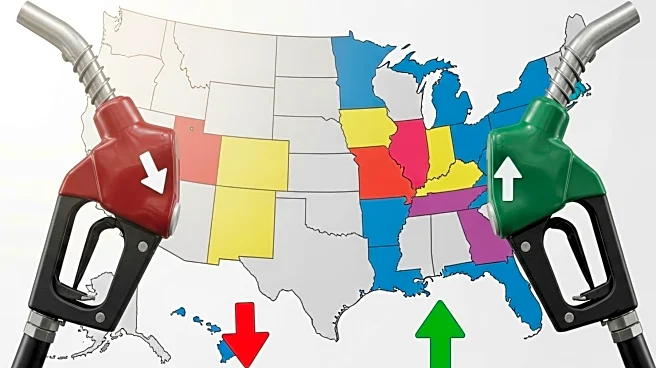What is the story about?
What's Happening?
Diesel prices have continued to fall across various U.S. regions, while gasoline prices have seen an increase. According to AAA, the national average for a gallon of regular gasoline fell three cents to $3.13, marking the lowest price for this day in five years. The Midwest experienced the largest increase in gasoline prices, rising by 8 cents to $3.077. Conversely, the Gulf Coast saw the most significant drop in diesel prices, falling by 1 cent to $3.328. The West Coast reported a rise in diesel prices by 1 cent to $4.461. These fluctuations are influenced by the volatile oil market, with crude oil prices playing a significant role in determining fuel costs.
Why It's Important?
The changes in fuel prices have direct implications for consumers and industries reliant on transportation. Rising gasoline prices can increase operational costs for businesses, particularly those in logistics and transportation sectors, potentially leading to higher prices for goods and services. Conversely, declining diesel prices may offer some relief to these industries, balancing the overall impact. For consumers, lower diesel prices could mean reduced costs for goods transported by diesel-powered vehicles, while higher gasoline prices might affect personal transportation budgets. The broader economic impact hinges on the stability of crude oil prices and geopolitical factors that could further influence fuel costs.
What's Next?
The future trajectory of fuel prices remains uncertain due to the volatile nature of the oil market. Factors such as geopolitical events, tropical storms, and changes in crude oil prices could significantly impact fuel costs. Stakeholders, including businesses and consumers, will need to monitor these developments closely. If crude oil prices remain low and no major disruptions occur, there is potential for gasoline prices to continue decreasing, offering some economic relief as summer ends.
AI Generated Content
Do you find this article useful?












